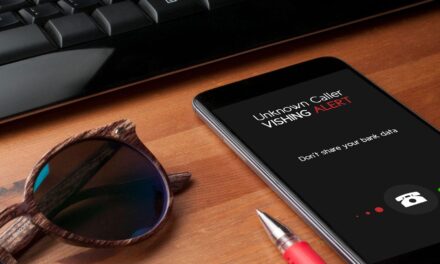No matter what response you key in, the automated phone system thanks you for authorizing the fake ‘request’. Prank’s on you!
Instead of sending phishing emails and messages to panic people into logging-in on fake web pages, cybercriminals can also do the same with phone calls and pre-recorded voice messages.
This is called ‘vishing’ (i.e., voice phishing), and in the last four months, one cybersecurity firm has detected almost 350,000 vishing attempts to convince people to call phoney operators and reveal credit card information and account login details over the phone.
Just like with phishing, the scheme starts with any kind of message from a large online-store or payment system warning that a request to withdraw a large amount of money from your account has been received. In phishing, victims are lured into following a link to log in and cancel the supposed ‘request’, while in vishing the victim is prompted to call the a ‘customer support number’ provided, where personal log-in credentials are expected to be provided.
According to Kaspersky experts, while people can smell a rat when they land on a phishing site and notice signs of fakery, phoney customer support calls are less easy to spot, especially when victims are usually distracted and worried. Under these circumstances, attackers can throw them further off balance: by rushing them, intimidating them and demanding that they urgently provide their credit card details to cancel the supposed fraudulent transaction.
In TikTok, there are videos of vishing pranks where an automated answering machine is used, so victims frantically key in the responses needed to cancel the fake withdrawal request. However, the automated response always goes right ahead to confirm that the request has been authorized. People then think the answering machine has ‘misheard’ them and panic and scream—to the laughter of pranksters.
According to a Kaspersky security expert Roman Dedenok: “When you view these videos on your phone you think, ‘how can anyone fall for such a thing?’, but when people encounter scam calls in real life, they are often caught off guard and can’t clearly assess who is on the other end of the call.”

















